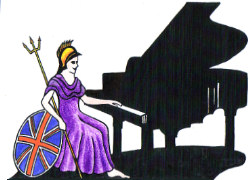Piano Accompanists Accompanying choirs, singers, violinists, and many other instruments for exams, recitals and competitions.
Piano Accompanists City of Edinburgh

UK Piano Page

Browsing Scotland » Edinburgh » City of Edinburgh » Piano Accompanists
This is a list of piano accompanists, accompanying singers, violinists, and many other instruments for exams, recitals, and competitions, sorted in county order. Click on your county and this will take you to your nearest accompanist.
If you are an accompanist for ABRSM exams, recitals or competitions and wish to be included in our list, please click on Add An Accompanists above and fill in the forms provided, it's free.
To find the nearest piano Accompanists that covers your area, type your town in the search box below.
for only £6.00 + PP

Music Festival for performers and guests Our 10th
18-06-2022 01:30PM
The Morecambe Bay Piano Group was set up to extend
11-12-2021 02:00PM
The Morecambe Bay Piano Group was set up to extend
08-01-2022 02:00PM
The Morecambe Bay Piano Group was set up to extend
12-02-2022 02:00PM
The Morecambe Bay Piano Group was set up to extend
11-05-2024 02:00PM
The Morecambe Bay Piano Group was set up to extend
08-06-2024 02:00PM
The Morecambe Bay Piano Group was set up to extend
13-07-2024 02:00PM
The Morecambe Bay Piano Group was set up to extend
10-08-2024 02:00PM
Tuning Temperaments
How many piano tuning temperaments are there?
There are countless variations, but most fall within three major categories;
1. Meantone, which generally concentrated the dissonance into a few unusable intervals (often called "wolf" intervals), so that the others could be Just. These are often called "restrictive" tunings, since there are certain intervals that are not usable. Good intervals are really good, bad ones are really bad. The Meantone era was approx. 1400-1700
2. Well-Temperament, which gives more consonance to the most often used keys, and more dissonance to the lesser used ones. Though not equal, these tunings are "non-restrictive" because all intervals can be used. The intervals range from Just to barely acceptable. Well-temperament refers to a genre, not a specific tuning. The Well-Tempered era is approx. 1700-1880.
3. Equal Temperament, which spreads the dissonance equally among all intervals.
There is no difference in consonance or dissonance between any keys, thus, there are no good ones or bad ones. Equal temperament represents a complete average. Dates of its acceptance are debated, but there is ample evidence that it was widely available by 1900 and is the predominate tuning on keyboards, today.
r.